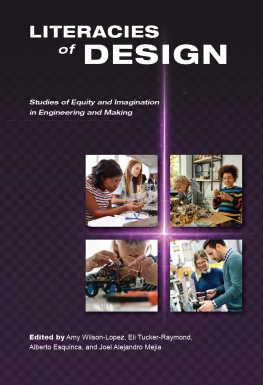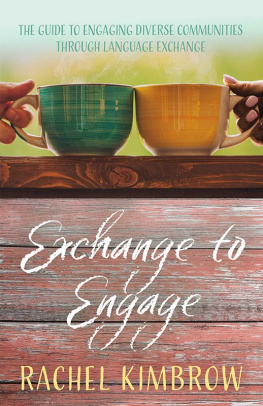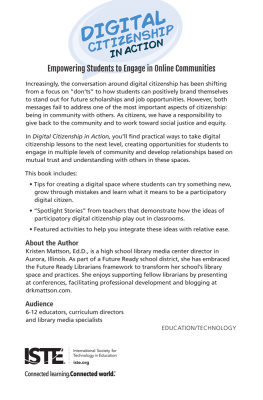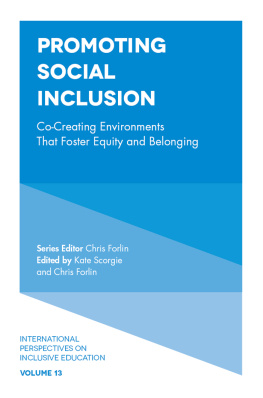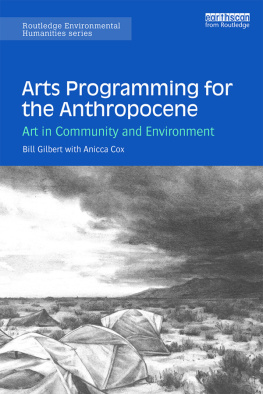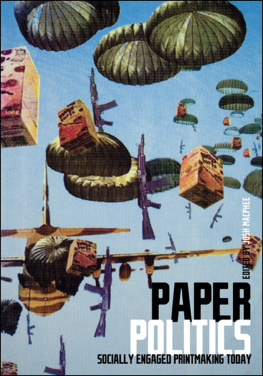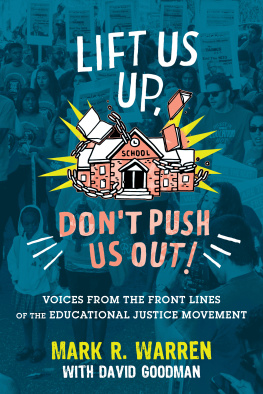The authors wish to thank the generosity of the Queens Museum, NY, for the effort and time invested in the planning and implementation of the July 1719, 2015, USSEA/InSEA regional conference, An Inclusive World: Bridging Communities . The purpose of the conference was to breach the isolation of parallel art fields that share the goals of equity, accessibility, and social responsibility: the professional art world, art education, museum education, art therapy, art history, and disability studies in art education. The presenters generous sharing of resources served as the catalyst for writing Bridging Communities through Socially Engaged Art .
Special thanks to former President and Executive Director of the Queens Museum, Laura Raicovich; Mitra Dejkameh, Manager of Art Access and Autism Initiatives, who supported the event and agreed to make it a priority; Rachel Shipps, who was Associate Coordinator, Art Access , Queens Museum Facilities, IT & Events Assistant, and who was helpful in the planning stage; Jason Yoon, former Director of Art Education, who helped with conference outreach and is now Executive Director of Atlas DIY; Claudia Dishon, Manager of School Programs, who assigned educators to help with the conference; Danny Corona, who was always there to help with logistics and tech support; Marco Castro Casio, former Visitor Experience Manager, who offered advisement for pre-conference logistics; Pema Domingo Baker, former Communications and Digital Media Marketing Manager, who marketed the conference through various platforms; Eneida Archbold, Chief of Security, who made sure the three-day conference event ran smoothly; and former Queens Museum Director of Public Programs and Community Engagement, Prerana Reddy, who was helpful in every aspect of the planning. Prerana is now Director of Programs, at a Blade of Grass.
NYCATA/UFT offered unwavering support to make the conference a success. We thank Mario Asaro, President; Joan Davidson, President Emerita; Board Members Lisa Kaplan, Erin-Marie Elman, and Anu Sieunarine; and Marion Theodore, Liaison to COPE NYC. Museum Access Consortium (MAC) and NYSCI New Yorks Center for Interactive Science gave us the support we needed.
Thank you to Sarah Khalid Dhobhany, COPE NYC Social Media and Administrative Assistant for Conference Logistics, Marketing, Registration, and Hospitality, and currently Community Engagement Coordinator, Mana Contemporary Chicago. Thank you to Vida Sabbaghis husband, Steve.
We thank the USSEA and InSEA Executive Boards and members for their support and acknowledgment of this project, and the organizations long history of commitment to cultural diversity and intercultural understandings. We thank Palgrave Macmillan for permitting us to reprint How Do You Get To Prospect Avenue? by Tim Rollins, which first appeared in Art Education Beyond the Classroom: Pondering the Outsider and Other Sites of Learning , edited by Alice Wexler in 2012. Finally, we thank the contributing authors, the majority of whom shared presentations at this conference.
1
Martha Wilson and Franklin Furnace
Martha Wilson
Introduction
When I graduated from college in 1969, the Vietnam War hung like a black curtain behind everyones consciousness. National Guardsmen shot and killed students at Kent State the following year. While my boyfriend wished to avoid the draft, I received a fellowship offer from Dalhousie University in Halifax, Nova Scotia, Canada. We thought the confluence of these events was a sign to leave America, land of our birth. I should add that I graduated from Wilmington, a small Quaker school in Ohio, and that my mothers family was Quaker, so political and social activism was part of my young life. This article will discuss how my consciousness developed in the context of the social, political, and economic environment of the 1970s, and how Franklin Furnace charted its political path from 1976 to the present day.
The Nova Scotia College of Art and Design, or NSCAD, was a hotbed of conceptual art practice because the new president of the school, Garry Kennedy, had turned two faculty salary lines over to the visiting artist program. Artists invited to visit included Vito Acconci, Joseph Beuys, Jan Dibbets, Dan Graham, Doug Huebler, Joseph Kosuth, Peter Kubelka, Sol LeWitt, Dennis Oppenheim, Lawrence Weiner, and Ian Wilson, among others. Because both my undergraduate and graduate degrees were in English Literature, when I discovered that conceptual art consisted largely of language, I was thrilled. My first work of art, created in 1971, entitled Chauvinist Pieces , was textual. It consisted of statements relating to motherhood. For example, in Chauvinist Piece , a man is injected with the hormone that produces symptoms of motherhood, and in Determined Piece , a woman determines her child based on an arbitrary system (a row of sperm-bottles marked with colors, the alphabet, and numbers) according to which color, letter, or number pleases her.
My first work of art employing photography was called Breast Forms Permutated , a satirical look at the tendency of early 1970s conceptual artists to permutate everything (see ). Breast Forms Permutated permutates a form that is female and limitlessand thus mocks the practice of permutation as well as the privilege of the male gaze as played out in the art-school environment and in society at large.
After receiving an MA in English Literature in 1971, I began thinking about a PhD thesis that was ultimately rejected by my professors. They considered my proposal to diagram and/or build a model representing each of the structures of Henry Jamess novels visual art. So I went across the street to NSCAD and asked the president for a job. The English teacher was leaving, so I was hired to teach English grammar to art students. This faculty position enabled me to audit classes, participate in workshops, and use the schools video equipment. During visiting artist Vito Acconcis residency at the school, he recommended I read Erving Goffmans The Presentation of Self in Everyday Life , a 1959 work of sociology that analyzes the audiences for whom we perform all the time; this book rocked myworld, affirming the value of the 1972 performances I was doing alone in the studio for the camera and my internal sense of audience: Premiere , Routine Performance , Art Sucks , and Appearance as Value .

Martha Wilson, Breast Forms Permutated . 1972.
Photograph by Martha Wilson.
I viewed my art practice as experimental. Posturing: Drag (1972) consists of a photograph of me dressed as a man trying to pass as a woman: wig, fake eyelashes, fake finger-nails. The text reads:
Form determines feeling, so that if I pose in a role I can experience a foreign emotion. This was an attempt at double sex transformation; I am dressed in drag so that the transformation is from female into male, back into female. Theoretically, the uninitiated audience sees only half of this process, from male into female.
Like everybody, I have been (consciously) aware of beauty since I was five years old. A Portfolio of Models is a 1974 photo/text work for which I dressed up in different roles, writing a paragraph about how each was perceived in a social context. Overlaying the whole piece is an introductory text that reads:
These are the models society holds out to me: Goddess, Housewife, Working Girl, Professional, Earth-Mother, Lesbian. At one time or another, I have tried them all on for size, and none has fit. All thats left to do is be an artist and point the finger at my own predicament. The artist operates out of the vacuum left when all other values are rejected.
When I announced that I wanted to be an artist, my mentor at NSCAD, who had been my painting teacher at Wilmington, replied, Women dont make it in the art world. Luckily for me, Lucy Lippard visited NSCAD, looked at my work, and said, Yes, you are an artist. And there are women all over North America and Europe who are using themselves as subject matter. She invited me to be a part of her traveling c. 7,500 show one of her number shows, each named after the population of the city in which it originated.


